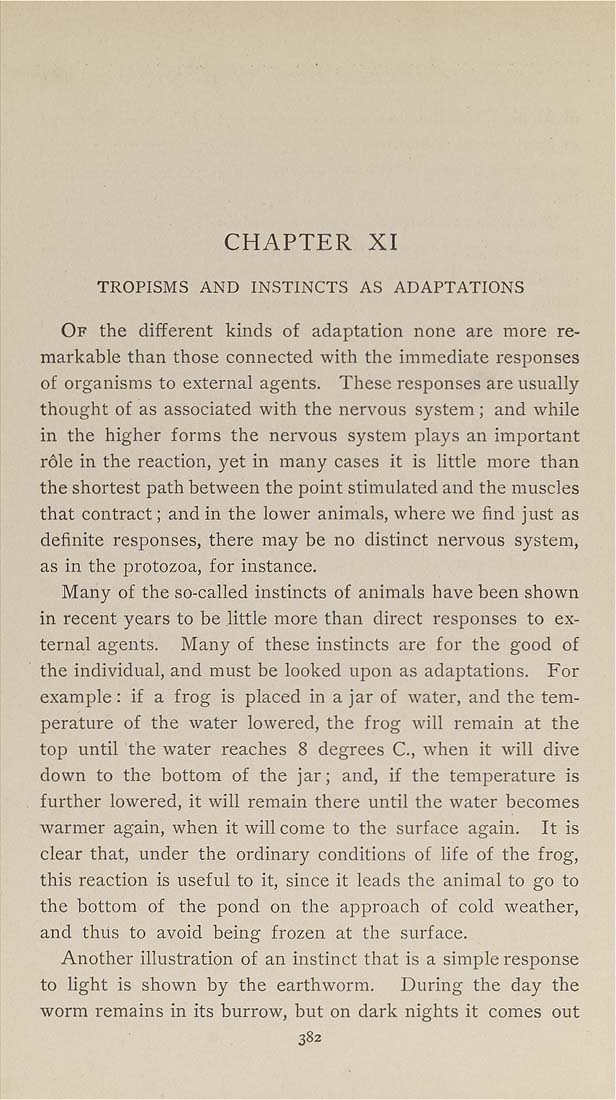CHAPTER XI
TROPISMS AND INSTINCTS AS ADAPTATIONS
Of the different kinds of adaptation none are more re¬
markable than those connected with the immediate responses
of organisms to external agents. These responses are usually
thought of as associated with the nervous system; and while
in the higher forms the nervous system plays an important
role in the reaction, yet in many cases it is little more than
the shortest path between the point stimulated and the muscles
that contract; and in the lower animals, where we find just as
definite responses, there may be no distinct nervous system,
as in the protozoa, for instance.
Many of the so-called instincts of animals have been shown
in recent years to be little more than direct responses to ex¬
ternal agents. Many of these instincts are for the good of
the individual, and must be looked upon as adaptations. For
example: if a frog is placed in a jar of water, and the tem¬
perature of the water lowered, the frog will remain at the
top until the water reaches 8 degrees C, when it will dive
down to the bottom of the jar; and, if the temperature is
further lowered, it will remain there until the water becomes
warmer again, when it will come to the surface again. It is
clear that, under the ordinary conditions of life of the frog,
this reaction is useful to it, since it leads the animal to go to
the bottom of the pond on the approach of cold weather,
and thus to avoid being frozen at the surface.
Another illustration of an instinct that is a simple response
to light is shown by the earthworm. During the day the
worm remains in its burrow, but on dark nights it comes out
382
|








